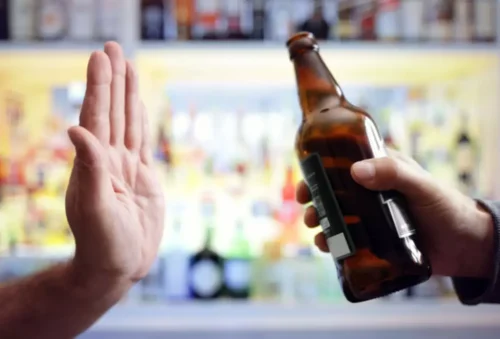
Two of these studies involved patients with CUD and comorbid opioid use disorder, and in the third trial, involving subjects with CUD alone, adherence to topiramate was poor. In the first trial, Umbricht et al. (64) evaluated the efficacy of topiramate and CM in 171 DSM-IV cocaine- and opioid-dependent subjects receiving methadone maintenance. Under a factorial design, participants received either topiramate or placebo, and monetary voucher incentives that were either contingent (CM) or non-contingent (Non-CM) on drug abstinence. Topiramate-treated subjects were inducted onto topiramate over 7 weeks, stabilized for 8 weeks at 300 mg daily, and then tapered over 3 weeks.
Advancing Quality in Addiction Studies Programs
Involuntary treatment is allowed under B.C.’s Mental Health Act; a person can be detained in a psychiatric facility if a doctor deems it necessary for their health and safety, as well as the safety of others. “We’re going to respond to people struggling like any family member would,” Eby said in a statement to media. “We are taking action to get them the care they need to keep them safe, and in doing so, keep our communities safe, too.” We dual reviewed and evaluated titles and abstracts for 18.6% of the search yield to ensure reliability. Two investigators independently reviewed the full text of all potentially relevant articles for inclusion.
Fentanyl Laced Cocaine Overdose
As a result, many universities now integrate alcohol, tobacco, and other drug content into their curricula, often within many specialty areas; however, cannabis and medical marijuana remain a new curriculum topic. Dr. Hamed Ekhtiari from the University of Minnesota and ISAM Regional Council chair, discussed how the ISAM Global Expert Network (ISAM GEN) can contribute to global drug policy reforms. ISAM GEN has established a well-honed road map for conducting their surveys, from idea development and steering committee formation all the way to manuscript submission. ISAM GEN’s first global survey assessed treatment service provision for opioid use disorder by querying national addiction societies and organizations in 39 countries from six continents.
Cocaine Overdose

Unfortunately, pharmacotherapy alone (aside from antipsychotics) does not appear to be effective in improving treatment retention rates. Two areas of promise that are notable include those in which patients have already demonstrated engagement in treatment, or may have another rationale for ongoing engagement, as is the case for some patients with comorbid opiate use disorder. Indeed, we found low SOE that antidepressants and psychostimulants improved cocaine use outcomes in patients cocaine addiction treatment with comorbid opioid use disorder (Table 5). Given that the prevalence of cocaine use among heroin users is between 30 and 80%,75 and concurrent opioid use increases risk of death due to cocaine,76 further investigation on treatments for comorbid opioid use disorder is warranted. Study Selection This meta-analysis was registered on Covidence.org (study 8731) on December 31, 2015. Of 831 records screened, 157 studies (18.9%) met selection criteria and were included in the analysis.
Outpatient Treatment: Recovery in the Real World

Dr. Zolotov concluded that a great need for formal education in medical cannabis exists and that standardized curricula can help bridge the existing gaps. However, advocates have said that involuntary care for those with drug addictions is often not helpful, with one study showing that people were at a higher risk of drug overdose after being discharged from compulsory treatment. Table Table22 provides a more detailed summary of the evidence on all pharmacotherapies for cocaine use disorder, stratified by drug class.
- Cocaine dependence can develop at different rates in different people; genetics might play a significant role in how quickly someone becomes dependent on cocaine after their initial use of this drug.
- But we need much more research into whether the vaccine is safe and effective over the long term.
- Table Table22 provides a more detailed summary of the evidence on all pharmacotherapies for cocaine use disorder, stratified by drug class.
- Eby, who was joined by representatives of the Musqueam Indian Band and Squamish Nation and Vancouver Mayor Ken Sim, said that the province would be adding more mental health treatment beds in hospitals as part of their approach.
- One investigator abstracted, and a second investigator confirmed details related to study design, setting, population, intervention and follow-up, co-interventions, outcomes, and harms.
In another negative trial of topiramate in comorbid cocaine- and opiate-dependent patients (65), 50 cocaine-dependent individuals maintained on methadone were randomized to receive topiramate up to 300 mg daily or identical placebo capsules. In addition, all subjects received brief behavioral compliance enhancement treatment (BBCET). Primary outcome measures included cocaine abstinence, verified by urine drug screens, and treatment retention. Topiramate was well tolerated but not better than placebo in reducing cocaine use (65). In the third trial, Nuijten et al. (66) conducted a trial of topiramate involving 74 crack cocaine–dependent outpatients.
If you or someone you love has chosen to stop using cocaine or any other substance, consider reaching out for professional help. With the right treatment ― whether inpatient, outpatient, or otherwise ― you or a loved one can get the help needed to overcome substance use disorder. Cocaine withdrawal can sometimes have severe symptoms, but many detox programs exist to help you through it. In contrast to pharmacotherapy, there are several forms of psychosocial treatment for CUD that have been proven to be beneficial.
- If you seek an inpatient program, you would be in a supervised setting where you are not able to obtain or use the drug.
- The subjects also spent significantly less money on cocaine during that time.
- With overdoses now the leading cause of death amongst Californians aged 15-44, Prop.
- Dr. Jones explained that children are increasingly victims of drug trafficking and drug use within their families and communities, leading to children as young as 5-12 years having an SUD.
- It’s a collaborative approach that helps individuals find their own motivation for change.
- This breakout session was chaired by Dr. Adrian Abagiu from the Romanian National Institute for Infectious Diseases and Dr. Matei Bals from the ARENA OST Center in Romania.

A computer-based CBT treatment program that could be used at the treatment program site, or eventually be converted to a web-based program accessible to patients from home, would help overcome the obstacles inherent in providing treatment in traditional brick-and-mortar treatment facilities. At least one computerized version of CBT has been shown to be effective for the treatment of CUD. For instance, Carroll and Onken (22) have developed a computer-based CBT4CBT (computer-based training for CBT) system. In a preliminary trial, 77 subjects seeking outpatient treatment for a range of substance use disorders were randomly assigned to CBT4CBT plus standard addiction treatment or to standard treatment alone (22). Participants were alcohol, cocaine, marijuana, or opioid dependent, with the use of multiple substances reported by 80% of participants. At the end of the 8-week trial, participants assigned to the CBT4CBT treatment submitted significantly more urine specimens that were negative for any type of drugs and tended to have longer continuous periods of abstinence during treatment.
Inpatient Rehabilitation: A Cocoon of Recovery
- The toolkit was launched in February 2024 with a webinar attended by more than 250 pharmacy professionals and other stakeholders.
- Remember, recovery is a journey, and by incorporating holistic approaches, you can create a strong foundation for lasting change.
- But addiction can be difficult to overcome alone, and many people with these disorders may relapse without the right support.
Dr. Elena Psederska from the New Bulgarian University presented on studies assessing the interplay of personality and neurocognitive function in stimulant and opioid use disorders. Specifically, the team studied the effects of psychopathy on neurocognitive domains of impulsivity in people who previously had used heroin and amphetamine. They assessed the effects of the interpersonal/affective domain and the impulsive/antisocial https://ecosoberhouse.com/ domain of psychopathy on impulsive choice and impulsive action in both groups. The analyses identified an interaction between the two dimensions of psychopathy and dependence on specific classes of drugs. Some profiles were common across SUDs, whereas others were unique for specific drugs. Another investigation assessed neurocognitive impulsivity in people who used heroin at different times of abstinence.

Following initial treatment, some people are transferred to a drug-free therapeutic community (TC) for six to 18 months to reinforce coping skills in a community atmosphere. The main complication of cocaine addiction is overdose, which results in cocaine toxicity. While cocaine can adversely affect every organ in the body, its most dangerous and life-threatening effects are on thecardiovascular system. There are a number of complications of cocaine addiction, and they can differ depending on your method of using the drug. The signs of cocaine addiction extend beyond the physical symptoms and also involve emotional and behavioral changes. The euphoric effects of cocaine use are accompanied by physical effects, including a rapid heart rate, sweating, and pupil dilation (widening of the pupils).